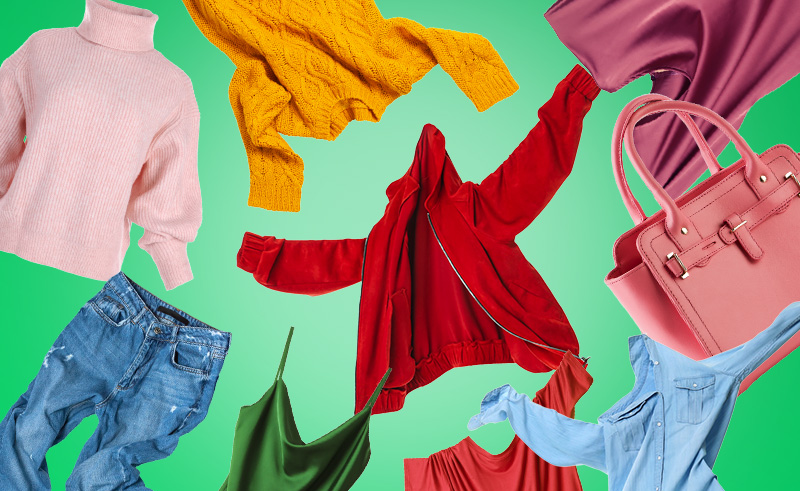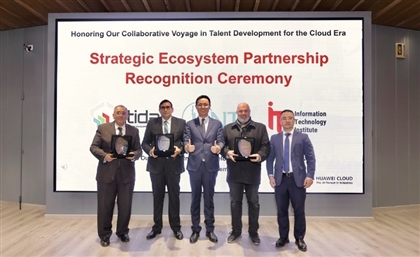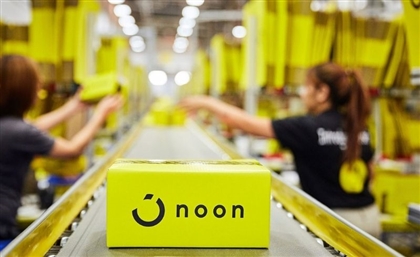From Waste to Wardrobe: A Push for Circular Models in Egyptian Fashion
A generation of Egyptian entrepreneurs seeks to break the paradigm by embracing ‘circular’ fashion and product design.

From ancient linen garments made of flax on the banks of the Nile, to modern-day synthetics and globally-coveted Egyptian cotton or Egypt’s ‘white gold,’ the production of textiles is deeply interwoven into Egypt’s history. The same holds true for Egypt’s economy, with the industry employing 1.5 million people and representing 11% of the country’s non-oil exports. Yet as the fashion industry continues to grow in Egypt and internationally, so do the challenges of sustainability and waste.
For one, the process of making your favourite garments is highly energy- and water-intensive, guzzling around 200 litres of water in every kilogram of product, and using chemicals like bleaches and dyes that seep as toxic wastewater into the Nile. What’s more, it’s a highly wasteful process, with most of the leftover fabrics and materials going down a one-way street to the landfill or incineration site in what’s known as a ‘linear’ process to take, make, use, and finally dispose of materials.
A generation of Egyptian entrepreneurs is seeking to break this paradigm by embracing ‘circular’ fashion and product design, a model based on regenerative practices that minimises harm to the planet and offers a plethora of social and financial benefits at the same time – a win-win situation to be sure, but not without its own challenges. With Egypt being designated one of the world’s largest “growth countries,” marked by rapid industrialisation, soaring population growth and an increasing demand for resources, little room is left for businesses that do not authentically ingrain sustainability into their business model.
In an effort to better understand the burgeoning sphere of circular fashion and product design in Egypt, StartupScene spoke with some of the business leaders and economic experts who are proving that ecologically-sound companies are not far-fetched concepts, but in fact necessary components to Egypt’s economic resilience, and are often more financially shrewd than their wasteful counterparts.
CLOSING THE LOOP
Fundamentally underpinned by Western exploitation of the raw materials and cheap labour of the Global South – typically countries such as China, India, Vietnam, and of course Egypt – the ‘fast fashion’ industry serves the goal of whipping up cheap garments for the Western consumer. It’s a highly demanding and grossly wasteful industry, with a 2021 report by the Ellen MacArthur Foundation finding that a truckload of clothes is binned or burned per second globally, whereupon waste is shipped overseas and out of sight towards countries of the Global South. Egypt is a prime example of this, being the third largest destination for Europe’s exported waste, receiving 1.9 million tonnes of waste from the continent in 2021, second only to Türkiye and India.
Veering away from this toxic paradigm, fashion and design businesses in Egypt have gradually begun to adopt ‘circular’ practices based on re-use and regeneration of their product materials, aiming to ‘close the loop’ or keep resources in use for as long as possible, minimise waste, and create new value from old products. If the traditional model of production is a one-way street, this approach is more like a roundabout that finds new avenues for social progress and economic resilience against international market volatility.
“Our motivation started off as a desire to have a positive impact on people and the planet.” shared May Kassem and Ali El Nawawi, the founders of Sacer, an Egyptian brand founded in 2018 that sells clothing and bags from upcycled materials. “We weren’t thinking of how to turn this into a lucrative business. We wanted to create jobs in humane working environments. When we started in 2018, none of this environmentalism was sexy or trendy in Egypt or around the world in general.”
Kassem and El Nawawi explained that it was only when restrictions from the COVID-19 pandemic and the economic recession hit that they became aware of the economic value and resilience that circularity offers.
“When the pandemic came, we had to be super quick on our feet,” Kassem and El Nawawi say. “We decided to use the deadstock and leftover fabrics from our very first batch of production back in 2019 to up-cycle face-masks from cloth, to meet an emergency demand. Our agility and circular approach allowed us to be one of the very first movers in the Egyptian market and our sales skyrocketed at the time which allowed us to sustain our business in one of the most intense economic crises ever.”
They explained that Sacer is based on the following circular principles, starting with design: sourcing materials from dead-stock and waste; adopting lean manufacturing techniques with a zero-waste goal; using inks and dyes that are not toxic to the Nile’s water streams and that are plastisol free; up-cycling products and materials; and helping regenerate nature at the beginning of our supply chain by only working with suppliers that work with biodynamic agricultural methods and certifications.
Sacer is not alone in its holistic approach to fashion. Similar hallmarks can be observed in a growing number of SMEs in Egypt such as Reform Studio, UpFuse, Jozee and Saqhoute that are turning to the materials around them, old and new, as a source of design inspiration. And it’s well worth pointing out that these innovative circular brands aren’t limited to the textiles and fashion industry, but are found within product design, furniture and homeware, such as Mobikya, Nafeza and Turath.
“I wanted to create a composite of materials that has the lifetime of a human being, something that’s both functional and aesthetically appealing,” shares Rania Elkalla, CEO and founder of Shell Homage, which produces sustainable and biodegradable material from egg and nut shells to create an array of home accessories, furniture and jewellery that can be composted in your garden. Elkalla explained that this first came as part of an undergraduate project that combined product design and materials science.
“The idea was inspired by eating nuts and seeds as a family. We’d sit around the table and chat as we cracked nutshells open. I thought, it’s such a wonderful material, it’s like wood – and a lot of it is simply wasted: 57% of the walnut is the shell.” Indeed, Egypt is one of the world’s largest wasters of food, according to the Food and Agriculture Organisation, with 50% of fruits and vegetables being lost or wasted.
It’s important to note that whilst “sustainability” or “green fashion” have become buzz-words slapped on the face of many brands and corporations today, regenerative practices and waste reduction are not a novelty to Egyptian culture and society; for over a century, waste-collectors of Cairo’s “garbage city” district of Manshiyat Nasser have sorted the city’s waste by hand, saving around 70% of this from becoming landfill, which is 30% higher than the rate of recycling in wealthy countries. And far from simply adopting Western standards of production, many Egyptian brands harness sustainability to draw closer to their heritage: Reform Studio employs local weavers to revive Egypt’s old craft that faces extinction, and local handicraft artisans are likewise made integral team members to the upcycling brand, UpFuse.
UNFOLDING AND RESTITCHING THE FASHION INDUSTRY: WHY NOW?
Delving into the context behind the opportunities and challenges of circular businesses in Egypt, we reached out to Dr. Dalia Sakr, who has over 20 years of experience in providing energy, resource efficiency, and climate change consultancy to governments and international development organisations.
“Why should businesses care to adopt circular practices? Firstly, a circular business model means you’re saving on energy, materials and water, which significantly cuts down on expenses and gives you a competitive edge,” Dr. Sakr explains.
“Then, you’re giving your products a unique edge that has a smaller environmental footprint, which is favourable to a certain client. It’ll especially improve the competitiveness of exports, given the growing demand for sustainable production in European and American markets – this would help fix the imbalance of trade within the textiles sector in Egypt.”
Testifying to this business ‘edge’ of sustainability is Sacer’s growing success. “We knew we were doing well abroad, as our sales are on the rise in the stores where we are stocking, but recently, we have seen our brand recognition more locally on the rise too: stores are wanting to stock our products, brands are approaching us for collaborations, so we must be doing something right. Our team is also growing, which is allowing us to get more creative in seeking more business opportunities and expanding our portfolio as a brand.” Their apparel was recently worn by rap stars Zaid Khaled, Idreesi and Riff.mp3 in the music video for Khaled’s latest music release ‘KNYMAKN,’ an illustrative example of how green fashion is ‘in’ right now.
Shell Homage has likewise built customer bases both at home and internationally, initially based in Berlin before teaming up with local Egyptian designers and galleries such as ALIEL, F for Farah and Afkarna Gallery to raise awareness for sustainable aesthetics. It’s a testament to how circular design opens new opportunities for innovation, collaboration, and value creation. Elkalla’s craft also garnered multiple accolades with a Green Product Award and a European Design Award under her belt.
However, investing in the right tech and equipment to collect, sort, clean, sterilise, up-cycle and re-create materials is a costly endeavour, and this was something that all our interviewed individuals noted as the main challenge to starting up a circular business. Given the fickle value of the Egyptian pound today and the fact that most machinery is imported from overseas, the one-off initial investment in this machinery represents a daunting first step to SMEs.
Is there any support available to SMEs with an environmental conscience? “A number of amendments were laid out in a new law for waste management in 2020, offering incentives for products that are less resource intensive. In addition, the Environmental Compliance Office (ECO) of the Federation of Egyptian Industries (FEI) provides some support for start-ups and green entrepreneurs,” Dr. Sakr mentions. One such initiative also includes the ITC (GTEX/MENATEX) programme, of which Sacer is currently a beneficiary.
“Egypt is also one of the main hubs for entrepreneurial ecosystems in the MENA region,” Dr. Sakr continues. “The annual Rise Up Summit is a good example of that. Incubators and accelerators appear ready to support businesses that clearly demonstrate sustainability and environmental passion, partly because of the certain ‘hype’ around eco-conscious brand identity. To be sure, FinTech companies are often the most appealing to investors, but the FinTech market is far more saturated.”
The RiseUp Summit this year gathered key players in a panel talk to discuss design solutions from repurposed materials, with speakers from VeryNile, Shell Homage, Esorus and two investors from VC Firm Averroes Ventures at the Grand Egyptian Museum. Another initiative bringing together creatives, designers and entrepreneurs is ‘From Waste to Good Taste,’ which has been carving out a space in Egypt for sustainable design ideas to come to life.
“Awareness for renewed materials has grown through projects like the Egyptian Cotton Project that was initiated in 2020 by the Ministry of Trade and Industry and UNIDO to revive the cotton industry,” Dr. Sakr says. “There’s been some impressive preliminary results already: regenerated cotton yarn could save up to 70% of water and up to 40% of energy use, which we hope will encourage further initiatives.”
TAKING STOCK: THE CHALLENGES AND OPPORTUNITIES
One enduring challenge businesses face is waste management. With no nationwide collection infrastructure in Egypt, the current waste handling industry is ridden with structural problems, making material waste an expensive load to bear for businesses seeking to become more conscious of their carbon footprint.
One way that businesses can handle their material by-products is by redirecting them to the Egyptian Clothing Bank, a non-profit organisation that gathers and repurposes clothing and material waste free of charge, before redistributing the new pieces across marginalised and underprivileged communities in Egypt. Through repairing, altering, recycling, and upcycling waste collected from individual donors and manufacturers, this zero-waste organisation has established itself as a lynchpin in Egypt’s circular fashion industry.
“The first time we gathered waste from a mass importer of clothes back in 2018, we took in 250 thousand pieces – most of it wasn’t even waste, but perfectly good pieces just in need of small repairs! We were able to spread the joy of free new clothes in 17 universities.” explains Eng. Manal Saleh, CEO and co-founder of the organisation.
The Egyptian Clothing Bank has also noted a rise in support and donations as support for circularity is slowly growing. “With the incentive of donation receipts that provide tax benefits, many more manufacturers, retailers, exporters, importers, and traders donate their waste to the Egyptian Clothing Bank -- in 2022 we received 2.2 million pieces.”
However, circularity is still at its infancy in Egypt and globally, as economic researcher Dr. Sakr is quick to point out. “There is still so much to do. The challenges for start-ups in an emerging economy are much more than the Global North.”
Education and awareness ideas around sustainability is still a huge barrier that business owners face. “Investment opportunities for creative industries in Egypt and globally were at first very difficult to get, the suppliers were extremely few and, at first, the factories wouldn’t even know how to wrap our products without using polybags. Sometimes they’d even laugh at our suggestions for alternative packaging solutions,” Kassem and El Nawawi from Sacer tell us. “The consumer lacked awareness on what organic cotton is, as well as concepts of up-cycling, recycling, labour conditions etc. We had to start an online consumer awareness campaign back in 2019 called ‘The Green Room’ inviting experts in circularity, environmental issues, and sustainable fashion to bring the message closer to our customers.”
From speaking to our interviewees, it appears that COP27 has gone some way to shift consumer behaviour. “We’re genuinely happy to notice that the questions around sustainability asked by our Egyptian consumers are more sophisticated and more to the point,” Kassem and El Nawawi say. “In the past, we’ve been demotivated by the fact that we’re only a small handful of players and our sales have been driven mostly by the brand aesthetic rather than the environmental or social impact we have, but now we believe things are changing.”
WHAT SHOULD WE EXPECT, MOVING FORWARD?
“We need more financial support and economic incentives for these business models, and more help to market their products, more capacity building offering boot camps and workshops, and educating the consumers. We also need more biodegradable material in circulation,” Elkalla from Shell Homage shares.
“I hope governmental trade councils recognize slow fashion as an ‘edge’ and an export opportunity like no other,” Eng Saleh of the Egyptian Clothing Bank says. “Egyptians are very colourful, very fashionable, and creativity is in our DNA. The brilliant local designers on the fashion scene now are proof. I hope that more sustainable fashion designers emerge and call for further support.
Sacer believes the media also has a huge role to play: “Allowing us to talk about real issues, challenges, successes and best practices will help bring our work into the mainstream. Seeing Sacer succeed in stocking in NYC, the Gulf, and Europe putting Egypt on the global map of sustainable fashion would definitely inspire emerging designers, convincing them that there is a huge potential. Seeing other brands succeed like Reform, Up-fuse or others in this space only makes this space more appealing for outsiders to know more about. Creating meaningful collaborations between these brands and other business-related suppliers will only give us all more weight locally, regionally and internationally.”
- Previous Article Naviatx’s Hamzeh Ghosheh on Creating Safer Roads From Palestine
- Next Article Tamara Raises $150 Million Debt Financing From Goldman Sachs






















